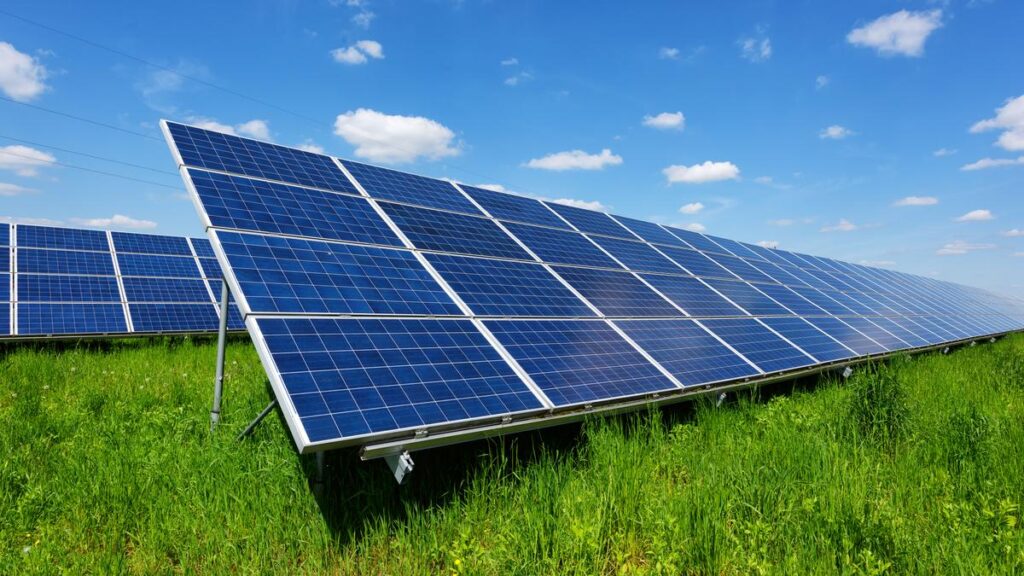India can achieve 70% round-the-clock (RTC) clean electricity for commercial and industrial (C&I) consumers by the year 2030 — at a lower cost than traditional annual clean energy procurement — according to a new report released by TransitionZero, a global climate analytics non-profit.
The report finds that India can deploy 52 GW (gigawatt) of RTC clean electricity capacity to serve 5% of its projected national demand by 2030, generating cost savings of up to ₹9,000 crore ($1 billion) annually for the grid. Unlike conventional renewable energy certificates that allow annual offsetting of electricity use, RTC clean energy matches every hour of consumption with power from zero-carbon sources such as solar, wind, and battery storage.
Editorial | Energy and efficiency: On India and greater energy efficiency mandates
Irfan Mohamed, South Asia Analyst at TransitionZero, said, “Our model shows that in India, commercial and industrial customers can meet 70% of their hourly electricity demand with carbon-free electricity at a cost below that of annual renewable energy matching, while driving greater levels of decarbonisation and providing significant benefits to the Indian electricity system.”
Emissions cut at lower cost
At the system level, the report shows RTC clean energy could cut emissions by 2.4% under the 70% matching scenario — more than double the 1% emissions reduction achieved under annual matching. When scaled to 100% RTC matching, the potential emissions reduction rises to 7%.
Notably, the cost of carbon abatement under the RTC model is significantly lower. The analysis reveals that achieving carbon reductions through 70% RTC clean electricity costs nearly three times less than doing so via annual matching.

“RTC clean electricity — also referred to as 24/7 carbon-free energy (CFE) — means matching every hour of electricity use with electricity from carbon-free sources. It ensures clean power is actually available when it is needed, all day, every day, instead of buying annual clean energy certificates. This approach helps drive real decarbonisation of the electricity system by encouraging clean energy at all times, not just on paper. This approach is especially important for heavy industries and data centres, whose electricity demand is typically flat around the clock, making hourly clean energy matching essential for their decarbonisation,” the report stated.
Maharashtra, a beneficiary
Maharashtra, which houses the largest cluster of data centres in India, is poised to benefit significantly from the 24/7 clean energy shift. The State’s energy demand is growing rapidly, particularly from digital infrastructure, which consumes power continuously and requires high reliability.
Earlier, climate risk assessments have already flagged four existing or planned data centres in Maharashtra as high risk. Transitioning to RTC clean energy, therefore, offers a dual benefit: reduced emissions and enhanced climate resilience.
Also read: Maximum MoUs in Maharashtra in sustainability and energy, says CM Fadnavis
“TransitionZero’s analysis shows that incentivising RTC clean electricity procurement is essential for least-cost grid planning and can deliver significant savings for India’s grid operators, who play a pivotal role in the country’s electricity sector transformation. It also helps build a more resilient and sustainable market for renewable energy power purchase agreements (PPAs),” the report stated.
It also warns that failure to plan for flexibility could lead to issues seen in Europe, such as declining PPA capture rates, especially in countries like Spain, where renewable energy oversupply has reduced market revenues.
The modelling shows that RTC clean energy at 70% matching can be deployed using a combination of solar, onshore wind, and battery storage. Solar and batteries, in particular, show high synergy, with each MW of solar requiring approximately 2 MWh of battery storage to ensure a stable and reliable power supply throughout the day and night.

At 70% matching, the system not only avoids extra costs — it saves them. The report estimates that capital and operational savings could lead to net system cost reductions of up to 35% compared to the annual matching model.
Long-duration energy storage (LDES) plays a minimal role in the scenario, primarily due to high upfront costs and relatively low competitiveness with 4-hour lithium-ion batteries, which are already widely available and rapidly decreasing in price.
The report arrives at a critical time, as the Greenhouse Gas Protocol (GHGP) — the global standard for corporate emissions reporting — is reviewing its Scope 2 guidance. The revised framework is expected to move toward hourly emissions accounting, making RTC clean energy procurement increasingly relevant for ESG-compliant companies.
“The GHGP is in the process of a multi-year revision of its standards. A central focus of this review is the update to the Scope 2 guidance — the rules governing how companies account for emissions from purchased electricity. While hourly emissions accounting is emerging as the preferred method, the GHGP does not set targets or grade performance,” the report explained.
To accelerate the shift, TransitionZero recommends that Indian policymakers provide clear regulatory incentives and support flexible market mechanisms that reward real-time clean energy use, not just aggregate annual numbers.
Matt Gray, Co-founder and CEO of TransitionZero, says: “Our analysis shows round-the-clock clean electricity planning and procurement is a ‘no regrets’ option for India’s energy planners, grid operators, and large corporations. It shows companies can procure hourly-matched clean electricity at minimal extra cost, and grid operators can save money through least-cost grid planning. In doing so, governments can help deliver the energy transition at the lowest cost.”
As India moves towards its goal of achieving 500 GW of non-fossil fuel capacity by 2030, the TransitionZero study makes a strong case for why RTC clean electricity is not just desirable — it is cost-effective, climate-smart, and future-ready.
Published – July 14, 2025 08:58 pm IST

